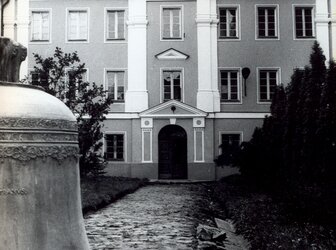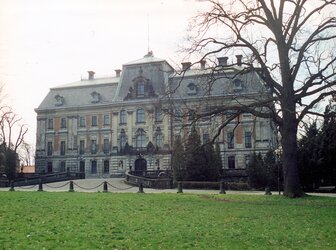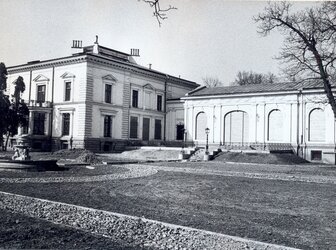The State Castle Museum in Pszczyna - Reconstruction of the 1883 - 1914 Castle Interiors
Pszczyna Castle was built in the 14th century as a hunting lodge and has been developed extensively for the next six hundred years. It acquired its present shape thanks to reconstruction works in 1870 -1876 according to a design by a French architect Alexander Destailleur. The ...
Read more
Project details
| Title: | The State Castle Museum in Pszczyna - Reconstruction of the 1883 - 1914 Castle Interiors |
|---|---|
| Entr. year: | 1995 |
| Result: | Diploma |
| Country: | Poland |
| Town: | Pszczyna |
| Category type: | architectural heritage |
| Building type/ Project type: | residential building |
| Former use: | Chateau |
| Actual use: | Museum, cultural attraction |
| Built: | 19th century |
| Architect / Proj.leader: | Alexander Destailleur, Architect , Janusz Ziembinski Ph.D. |
| The Jury's citation: | "For the careful refurbishment of the castle's interiors and furnishings, all based on meticulous historic research, to restore the lustre of the early 20th century" |
| GPS: | 49°58'41.4"N 18°56'25.6"E |
| Web, Links: | www.zamek-pszczyna.pl/ |
Description:
Pszczyna Castle was built in the 14th century as a hunting lodge and has been developed extensively for the next six hundred years. It acquired its present shape thanks to reconstruction works in 1870 -1876 according to a design by a French architect Alexander Destailleur. The interior decorations, as well as their arrangements, were remodeled several times, especially in 1907-1914, when some of the rooms were completely rebuilt. In 1946 there was established the Castle Museum, which managed to preserve much of the old furnishings. The political ideology of the post-war Poland disfavored the motif of the history of aristocracy as exposed in the Castle Museum and confined the role of the museum to historical interiors' exhibition. In the unnaturally furnished "Renaissance", "Baroque" or "Rococo" rooms dominated an unbearable dissonance between the exquisite 19th century architecture and the interior expositions. The new objective was a faithful reconstruction of the historical reality corresponding to the interior arrangement at the turn of the century. The choice was made to portray the post-1907 period. The Interior was decorated according to the 19th century iconography (Armory, Billiard room, Small Dining-Room, Miniature and Painting Room). The historical interiors were fully reconstructed on the basis of old photographs and archival studies (corridors of the ground, first and second floor, Princess Daisy's Sitting Room, Master's Room, Drawing Room, Library, Grand Guests' Room). About 80% of the original furnishings have returned to the redecorated interiors.
Similar projects


End of the 18th century

16th-18th century

18th century

19th century

19th century

15th century

19th century


19th century

18th century

19th century





